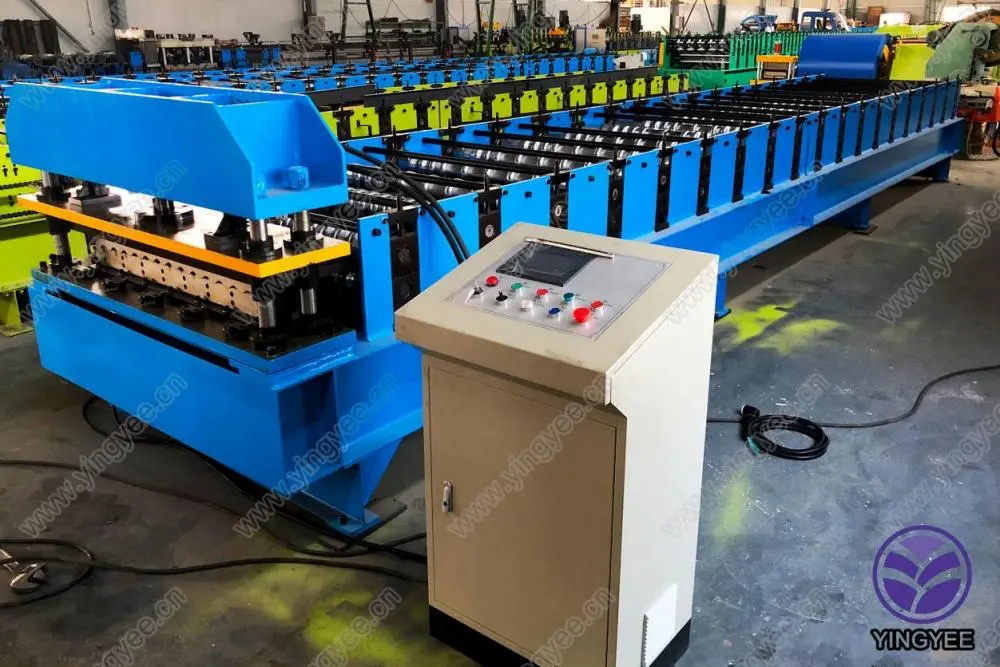
The Supermarket Shelf Layer and Back Panel Roll Forming Machine Enhancing Retail Efficiency
In today's rapidly evolving retail environment, efficiency and optimization are paramount for businesses looking to stay competitive. One of the critical components in supermarket design is the shelving system, which not only influences product visibility but also impacts inventory management and customer experience. The development of supermarket shelf layer and back panel roll forming machines has revolutionized the way shelving units are produced, enabling manufacturers to create high-quality, customizable shelving solutions that cater to diverse retail needs.
Understanding Roll Forming Technology
Roll forming is a manufacturing process that involves feeding a long strip of metal through a series of rollers to achieve the desired cross-sectional shape. This technique is particularly advantageous for producing continuous lengths of material with consistent quality and precise dimensions. The supermarket shelf layer and back panel roll forming machines are specifically designed to create the structural components of retail shelving, including the layers that hold products and the back panels that provide stability and support.
The machines typically consist of several key components uncoiler, roll forming stations, cutting systems, and control panels. The uncoiler unwinds the metal coil and feeds it through the rollers, where it undergoes shaping and forming. As the material passes through each roller, it gets progressively shaped until it reaches the final design. After the desired profile is achieved, a cutting system trims the material to the specified lengths, allowing for immediate use in shelving production.
Benefits of Supermarket Shelf Layer and Back Panel Roll Forming Machines
1. Customization One of the most significant advantages of these machines is the ability to customize the shelving components according to the specific requirements of different retail spaces. Supermarkets vary in layout, size, and product offerings; therefore, having the capacity to produce bespoke shelf layers and back panels helps retailers optimize their storage capacity and display aesthetics.

2. Cost Efficiency Traditional shelving manufacturing methods often involve complex processes that can be time-consuming and resource-intensive. Roll forming streamlines production, reducing labor costs and waste. By using continuous metal strips, manufacturers can save material and minimize excess, making the process more economical.
3. Durability and Strength Roll formed products tend to have superior strength compared to those that are stamped or fabricated using other methods. The continuous nature of the roll forming process ensures that the structural integrity of the material is maintained, resulting in robust shelf layers and back panels capable of supporting heavy products without warping or bending.
4. Speed of Production High-speed roll forming machines can produce large quantities of shelf components in a fraction of the time it would take traditional manufacturing methods. This increase in productivity allows retailers to get their shelving systems into stores quickly, accommodating seasonal changes or new product lines efficiently.
5. Eco-Friendly Production Roll forming processes often generate less waste than other fabrication methods, aligning with the growing demand for sustainable practices in manufacturing. By optimizing material usage, companies contribute to environmental conservation while also meeting regulatory standards.
Conclusion
As the retail landscape continues to shift, supermarkets must adapt swiftly to meet consumer demands. The introduction of supermarket shelf layer and back panel roll forming machines plays a pivotal role in enhancing manufacturing efficiency, allowing businesses to create customized, durable, and cost-effective shelving solutions. By investing in advanced roll forming technology, retailers can not only improve their operational capabilities but also enhance the overall shopping experience, ultimately leading to greater customer satisfaction and loyalty. In this way, roll forming machines represent a vital innovation in the world of retail, propelling supermarkets into a more efficient and successful future.